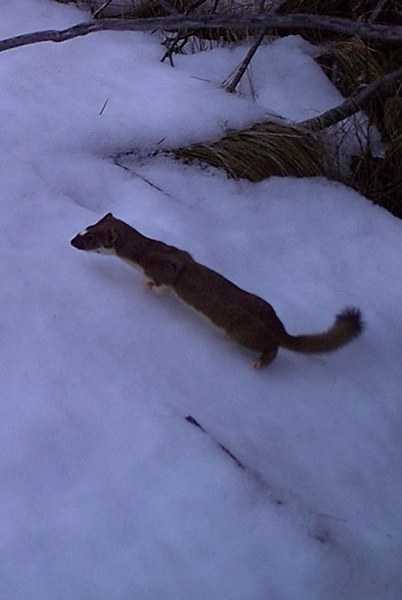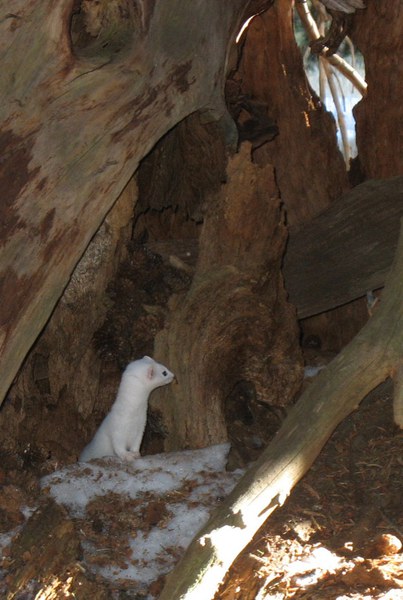When you think of winter in Central Oregon, wildlife may not be the first thing that comes to mind. Instead, you may conjure images of stillness and silence--of white-blanketed pines and nary a movement aside from the occasional pinecone dropping onto the snow.
In fact, right now you might be thinking, “What wildlife? Aren’t animals hibernating in the winter? Of course I don’t see them around!”
But that’s where you’d be wrong. While many animals do enter a dormant phase in the winter, many continue to thrive out of sight and out of (human) mind in the snow-submerged world of the subnivean zone. In particular, some small mammals, such as mice and voles, spend their winters in these sub-surface labyrinths of tunnels and den--places that might seem safe.
For the most part, these subnivean zones do protect the little critters, hiding them from many major predators and the dangers of humans while keeping them heated by the relative warmth of the ground. However, all winter long one species continues subjecting its fellow snow-dwellers to fearsome evolutionary adaptations that might make even Darwin’s hair stand on end.
That’s right: winter’s most vicious and voracious warrior is the weasel, the mightiest of the mustelids.
They may be the smallest mammalian predator species in the region at only 10-16 inches long, but they pack an enormous predatory punch and take snow camping to a whole new level.
What makes these weasels so well-equipped for the winter?
To begin with, they blend in! Weasels spend most of the year with brown and yellowish fur, but as temperatures and snow both begin to drop, they molt to become all-white, except for a black-tipped tail. They’re fast, too, and between their speed and their winter coloring they can scurry across the snow virtually unseen.
Oftentimes, though, there’s no need to move on top of the snow at all. One of their other clever adaptations is their extremely narrow, cylindrical body shape. Voles, moles, and other rodents dig tiny tunnels down to their warm ground-level subnivean dens, and most animals can’t fit in these little spaces. Weasels, however, can--wait for it--weasel their way into these burrows to find and kill their prey.
When it comes to warmth, weasels need all the help they can get. While their long, skinny body shape makes them excellent subnivean slitherers, it also gives them a very high surface-area-to-volume ratio that makes it difficult to retain body heat. Combine that with a resting metabolic rate twice that of other similarly sized animals and a relatively small stomach, and it means they must hunt almost constantly and eat an average of 5-10 times per day.
Ultimately, they eat about half of their body weight daily, and anything they can’t get around to eating they can conveniently store in their stolen dens while they rest up for the next hunt. Imagine eating that much every single day--you’d need a nap, too! Being that vicious is tough work.
As the snow continues to pile up in the mountains, imagine the entire animal world underneath you as you snowshoe, ski, ride, or sled across the surface. Down there, the tiny, well-adapted weasel reigns supreme, and if you happen to glimpse a black-tipped tail disappearing into the snow, it just might mean that a hunt is on.
Learn more:


Weasels: Central Oregon's Tiniest Winter Warriors
A weasel at Indian Ford Meadow Preserve. Photo: Dane Zehrung.
A weasel looks around, maybe for a next meal? Photo: Jana Hemphill.
